Reflecting on a Divided Continent: Biking across Gaspé to New Brunswick’s Acadian Peninsula
Writing by Michael Chase, Drawings by Jenny Hershey
Our biking plans at New Brunswick’s Sugarloaf Provincial Park were interrupted by closures due to forest fires and drought - a stark reminder of the region’s climate challenges - but this led to a fortunate encounter with Anthony, a Park Engagement Specialist. A fellow cycling enthusiast, Anthony commutes 30 minutes each way on his e-bike and even tows his six- and eight-year-old sons in tandem on recreational rides. He expertly redirected us to alternative routes along the peninsula and noted that the parched landscape would need at least two days of steady rain before the park system could safely reopen.
Prologue
We began our journey in Mont-Joli, Quebec, near the rocky coast of Rimouski on the south shore of the Saint Lawrence. After a pleasant dinner with friends and a decent night’s sleep in spite of an unusually warm evening, we left our car behind and headed east on our bicycles into the Appalachian mountains of the Gaspé Peninsula. Our early destination, a two-day ride over the mountains, was the New Brunswick coast along the shimmering expanse of Chaleur Bay. Our excitement was high, despite the intensifying heat.
After traveling from Mont-Joli to Amqui, our route took us down to the coast for a short trip to Carleton-sur-Mer before we continued through Campbellton and Bathurst to the Acadian Peninsula. While the peninsula is fairly flat, its mix of forests, wetlands, and Acadian villages makes it a charming and welcoming region. Despite numerous wildfires in the area, constant breezes kept the air surprisingly clear near the coast.
But our enthusiasm was short-lived. The record-breaking 37.6°C (99.7°F) heat was more than mere discomfort; it felt like a planet in distress. As we biked toward New Brunswick’s northern shore, we endured several more brutal days. Thankfully, a day of rain broke the heatwave, followed by a long stretch of beautiful and pleasant days with steady, welcome breezes.
The physical toll was immediate, however, and a harsh lesson in the dangers of heat stroke. Jenny felt it acutely, losing her appetite and becoming lightheaded as the hours wore on. My struggle came the first night, with severe leg cramps that stole my sleep. We found a brief respite on our second day by bathing in our clothes in the cool, clear waters of the Matapédia River. But as the oppressive heat and a pervasive smoky haze - the result, we later learned, of wildfires burning across the province - settled over us, our exhaustion settled into a moodiness that vacillated between quiet introspection and outright crankiness.
A plume of smoke from a fire between Bathurst and Miramichi drifts over Dalhousie Bay in this photo from August 16. The province is fighting its most severe wildfire season in decades amid Canada’s second-worst fire season on record. The situation remains volatile: on August 19, there were 33 active fires (four out of control). By August 20, that number fell to 20 active fires (five out of control). Today, on August 23, there are 19 active fires with four still burning out of control.
Reflections
We have come to love the vast North American continent through our long bicycle rides, from Newfoundland to the Acadian coast to the highlands of Quebec, the Virginia and Tennessee mountains, the mighty Rocky Mountains and the southwestern deserts; often by crossing a border into Canada that feels more like a handshake than a division. Yet, our countries’ shared soul makes today’s political divide feel like a personal wound.
It is unsettling to watch one nation turn its back on the future, while the other, for all its imperfections, strains to heed the desperate pleas of our planet. This ache is sharpened by the knowledge that so many we love - our friends, our family, our grandchildren - reside in the country that is choosing to look away. The whiplash that we feel is staggering. As we pedal through Canadian landscapes visibly scarred by a changing climate, we are heartened to see a difficult, yet necessary turn toward science. And we are deeply disheartened that just across that friendly border in our home country, we see an accelerating retreat from reality, including an intolerance to basic human rights and a willful deafness to science. Those differences chill us to the bone.
On the southern shore of the Gaspé Peninsula, where the Matapédia River flows into the Restigouche, we found this stunning view. The Restigouche River carves out much of the border between Quebec and New Brunswick. Despite our GPS reading a scorching 107°F in the sun, the sheer beauty of the two rivers captured our attention.
The policy chasm between the United States and Canada has widened from a crack into a canyon. While the U.S. administration wages an ideological war on its own scientific institutions, Canada has taken a sharp turn in the opposite direction. This shift was cemented by the election of Prime Minister Mark Carney in April 2025, one of the most remarkable political turnarounds in the nation’s history. Carney, the former head of the Banks of Canada and England and a UN Special Envoy on Climate Action, led the Liberal party from more than 20 points behind in the polls to a minority government victory. He won on a platform of economic competence and a direct rebuttal to the populist, anti-science sentiments of MAGA.
This photo of mixed forest and wetland was taken on the Chaleur coast in Belledune during our only rainy day. New Brunswick’s landscape is largely dominated by forests, covering 80-85% of the province and making it the most forested in Canada relative to its land area. Critical wetland habitats like coastal marshes and inland bogs account for about 4% of the province, while all urban areas combined cover less than 10% of the province.
Choices
Canada’s choice in its last election presented a stark contrast to the last election in the States. While the defeated Conservatives under Pierre Poilievre would have unraveled the nation’s core climate policies, the country instead rallied to elect a leader who argues that a stronger economy is built by fighting climate change. The new Prime Minister’s victory speech - warning that Canada’s old relationship of close integration with the United States is “over” - proved prophetic. Now, as Canada navigates tense negotiations over new U.S. climate retaliation tariffs, its government is doubling down on climate initiatives, forging its own path with bold investments in green hydrogen, critical minerals, EV battery plants, and renewable energy.
It’s a bracing distinction, especially when we think about our grandchildren in the States, where the government continues to dismantle climate regulations. In contrast, Canada is being led through this turbulence by one of the world’s leading experts on financing the green transition. The path is uncertain and the American political pressure is immense, but Canadians are steering their own course.
Yet, while the ballot box may have settled the question of whether Canada is a “safer place,” the planet offers a stark rebuttal. As the recent heat wave shatters records in New Brunswick untouched since 1876, and another summer of smoke chokes the country, it’s clear that true safety is a fragile notion in a warming world. Even with renewed federal commitment, the physical reality of climate change is relentless. New Brunswick is seeing the effects firsthand, as the extreme fire conditions that swept through Atlantic Canada in early August are a direct consequence of a warming planet.
Edwina, a proud Acadian from the small port town of Neguac, New Brunswick, has been a housekeeper at the local motel for an impressive 34 years. Her life was recently disrupted by nearby forest fires; a week ago, she awoke in the night to a smell of smoke so strong she thought her house was on fire. The event confined her indoors for two days due to the poor air quality. While she cleaned the rooms, Edwina shared traditional Acadian music with us on her phone. She had recently participated in the Tintamarre parade with her community, where banging on pots and pans symbolizes Acadian joy and vitality. As a mother and grandmother of four, she is ensuring these cultural traditions are passed down through the generations.
Climate and Health
For the province’s children, these changes pose very tangible health risks. Warmer temperatures are expanding the habitat of ticks carrying Lyme disease, while air pollution from more frequent and intense wildfires exacerbates respiratory conditions like asthma. The Canadian Paediatric Society has labeled climate change the “single, largest global health threat of the 21st century” for children, emphasizing their unique vulnerability due to their developing bodies and greater lifetime exposure to increasing heat and other environmental hazards.
Beyond the physical harm, living through these events carries a heavy psychological toll. The rise of “eco-anxiety,” a chronic fear of environmental doom, is a documented phenomenon, especially among young people who feel their futures are being compromised. While one government may deny the problem and another acknowledges it, the anxiety children feel in both countries stems from the same frightening source.
Concentrated on the Acadian Peninsula, New Brunswick’s peatlands and bogs provide the foundation for the province’s significant peat moss industry (45% of Miscou Island is peat bog). The industry has harvested decomposed sphagnum moss from these vital wetlands since the 1940’s to create high-quality horticultural exports, making the peatlands a major economic driver and employer for northeastern New Brunswick.
The feeling that Canada is a “safer” nation is more than a perception; it is grounded in foundational policy, most profoundly in its commitment to universal healthcare. As climate-related health crises intensify, this system guarantees every Canadian child access to medical care—a right, not a privilege. The contrast with the United States is stark, where drastic cuts to public health and the potential erosion of Medicaid leave millions of children vulnerable just as environmental threats mount. Canada’s system, while spending half as much per capita, achieves superior outcomes where they matter most: in longer lives and lower infant mortality.
Yet, this vital safety net is still strained to a breaking point by climate change. Much of Canada’s health infrastructure is aging and ill-equipped to withstand the new ferocity of climate emergencies like extreme heatwaves and catastrophic flooding. And there’s a deeper paradox: the healthcare system itself is a significant polluter, contributing 5% of the nation’s total greenhouse gas emissions—more than the airline industry. The Carney government thus faces a dual challenge: it must make this system resilient enough to weather the coming climate impacts, while at the same time, working to decarbonize the very system of care itself.
19-year-old Omri is from the Listuguj Mi’gmaq First Nation, named after the boy in the children’s book “The Indian in the Cupboard,” by a father who loved reading the story to him. Omri generously offered Jenny a t-shirt from his community as a gift of friendship, a gesture that speaks to his role as a caring big brother in a large extended family. His mother, Heather, fosters her three young nieces and their autistic little brother, and Omri also has two half-brothers. Although he recently moved into his own apartment, he remains committed to helping his mother raise his cousins. He dreams of seeing the world and having adventures but emphasizes that he will always stay deeply connected to his Listuguj heritage and the 4,300 members of his nation.
Prime Minister Carney’s government has forged its mandate on a stark economic premise: that national prosperity and climate action are inextricably linked. The data bears this out with sobering clarity. Climate-related damages are projected to cost the Canadian economy $25 billion this year alone. Left unchecked, the toll could escalate to 2.9 million lost jobs and a devastating 19% drop in income for the country’s most vulnerable households by the century’s end.
The logic of prevention tells a different story. The case for proactive investment is overwhelming, with research showing that every dollar spent on climate adaptation returns $13 to $15 in benefits. By framing climate policy not as a political choice but as a matter of fiscal prudence and risk management, the Carney government seeks to build a lasting consensus, one that can withstand the turbulence of political cycles. This philosophy - which treats climate change as a fundamental threat to the national balance sheet - is the polar opposite of the current stance of the U.S. government, which dismisses climate action as a unnecessary and disposable expense.
A vital cornerstone of the Acadian Peninsula, Shippagan was founded in 1790 by resilient Acadian families. From its beginning, the town’s fortunes have been shaped by its natural resources. Hosting New Brunswick’s largest commercial fishing fleet, it serves as the essential hub for the province’s fishing and seafood processing industries. Above all, Shippagan is a proud bastion of Acadian culture, a vibrant community where the French language and heritage thrive.
When Jenny and I think of our grandchildren, this divergence between our nations becomes deeply personal. Our family in the U.S. faces a compound crisis: a government hostile to science, a rapidly destabilizing environment, and the dismantling of the public health systems meant to protect them. In a perverse twist, this crisis is fueled by the anti-science leadership of the Trump regime and its allies, who use a blind attachment to “natural approaches” as the foundation for RFK Jr.’s hollow promise to “Make America Healthy Again.”
In Canada, the outlook is more hopeful, but the dangers are no less real. The election of a climate-focused government provides a crucial buffer, a commitment to steer the ship of state by the navigational charts of science. But the storm still rages. Canada is warming at twice the global rate, and the impacts we witnessed this summer in New Brunswick are a stark testament to that fact.
The ultimate lesson from this summer of smoke and record heat is that while leadership matters immensely, climate change transcends politics and borders. The very air our grandchildren breathe will be shaped by decisions made in Washington, Ottawa, Beijing, and Brussels. Canada’s safety is contingent not just on its own policies, but on the actions of the international community, especially its closest neighbor.
The 45-megawatt (MW) Lamèque Wind Farm, connected to the grid in 2011, is the primary wind installation on Lamèque Island. Its 30 turbines cover 1,255 hectares (over 3,100 acres) of private land on the northeastern Acadian Peninsula.
Epilogue
As this bicycle journey through a sun-scorched New Brunswick comes to an end, we are left with a complex mix of gratitude, relief and dread. Gratitude for yet another fascinating and stimulating adventure, relief that Canada has chosen a path of reason and evidence, and dread for the path the United States is choosing, and for the countless number of children who will bear the consequences.
The feeling of being between two worlds is the feeling of being a grandparent in the 21st century. We find ourselves suspended between the world we knew and the more foreboding one our grandchildren will inherit - a world being forged right now in the halls of power and in the silent, inexorable chemistry of our atmosphere. The safety we seek for them is not guaranteed by a border; it must be built, together, through the courageous and unwavering pursuit of a sustainable future for all.
A true Acadian at heart, Gaetan spent many years in Montreal building large trucks in a factory before the call of his homeland brought him back to New Brunswick’s Acadian Peninsula. He returned with his high school sweetheart and wife of eight years, Annette. Near Caraquet, they fell in love at first sight with a spacious guesthouse on the Acadian bike trail, the Gîte L’Isle du Randonneur. Today, Gaetan runs the gîte, welcoming cyclists and motorists, while he tends to the property and its garden with his trusty lab, Foxy, who is always by his side. Annette works locally as an accountant, and despite the distance from Montreal, Gaetan remains close with his daughters and grandchildren.
Stay vigilant! Thanks for reading. If you haven’t done so, please subscribe to this blog to follow our next biking trip.
This newsletter was written by Michael Chase, and illustrated by Jenny Hershey. Unless otherwise noted, all material is the copyrighted property of the authors, including all photographs and drawings.
Jennifer Hershey’s drawings can be enjoyed on Instagram @deeofo.
Sources:
Choices
https://globalnews.ca/news/11154593/canada-election-mark-carney-victory-speech/
https://www.tvo.org/transcript/5008541
https://policyoptions.irpp.org/magazines/may-2025/carney-campaign/
https://www.npr.org/2025/04/28/nx-s1-5379573/canada-election-mark-carney-prime-minister
https://www.politico.com/news/2025/03/14/mark-carney-is-canadas-next-prime-minister-for-now-00230649
https://ca.news.yahoo.com/full-text-read-mark-carneys-063937600.html
Wildfires
https://en.wikipedia.org/wiki/2025_Canadian_wildfires
Canada's 2025 wildfire season now 2nd-worst on record - YouTube
https://www.cbc.ca/news/canada/new-brunswick/heat-new-brunswick-record-temperatures-1.7606725
Policy
https://www.politico.com/news/2025/04/28/mark-carney-wins-canada-prime-minister-election-00314480
https://en.wikipedia.org/wiki/Mark_Carney
https://policyoptions.irpp.org/magazines/april-2025/climate-comparison-conservative-election/
Economy and Health
https://nben.ca/en/component/tags/tag/children-s-health.html
https://www2.gnb.ca/content/gnb/en/corporate/promo/climate-change/your-health.html
https://cps.ca/en/documents/position/global-climate-change
https://www.unicef.ca/en/climate-change-and-childrens-rights
https://www.cma.ca/our-focus/climate-and-health
https://pa-ic.com/blogs/why-canada/canada-health-care-system-better-than-the-usa
https://www.nber.org/bah/fall07/comparing-us-and-canadian-health-care-systems
https://en.wikipedia.org/wiki/Comparison_of_the_healthcare_systems_in_Canada_and_the_United_States
https://pmc.ncbi.nlm.nih.gov/articles/PMC12270643/
https://www.cma.ca/our-focus/climate-and-health/climate-change-health-care-crisis
https://choosingwiselycanada.org/news/the-role-of-healthcare-in-mitigating-the-climate-crisis/
https://climateinstitute.ca/the-gdp-costs-of-climate-change-for-canada/




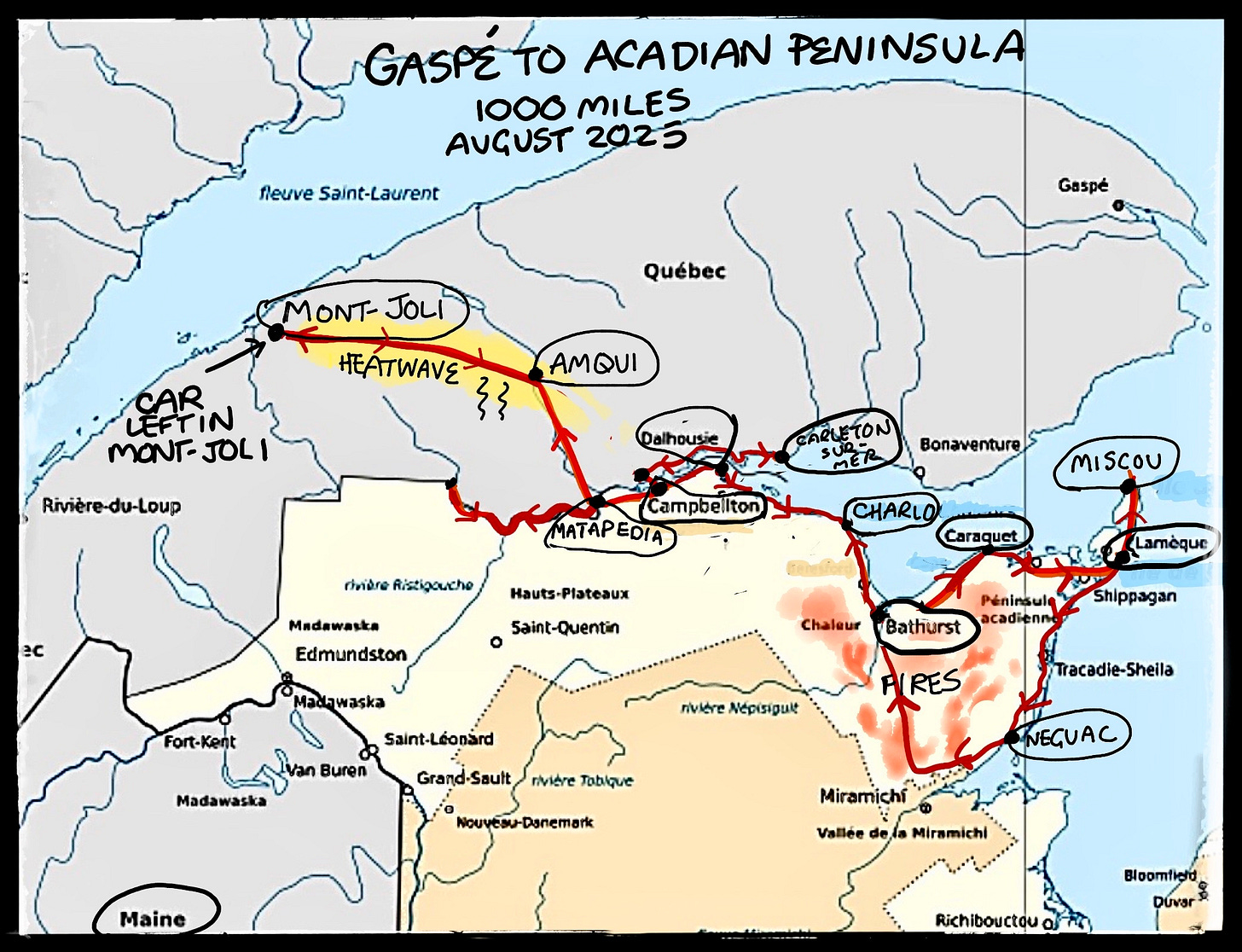
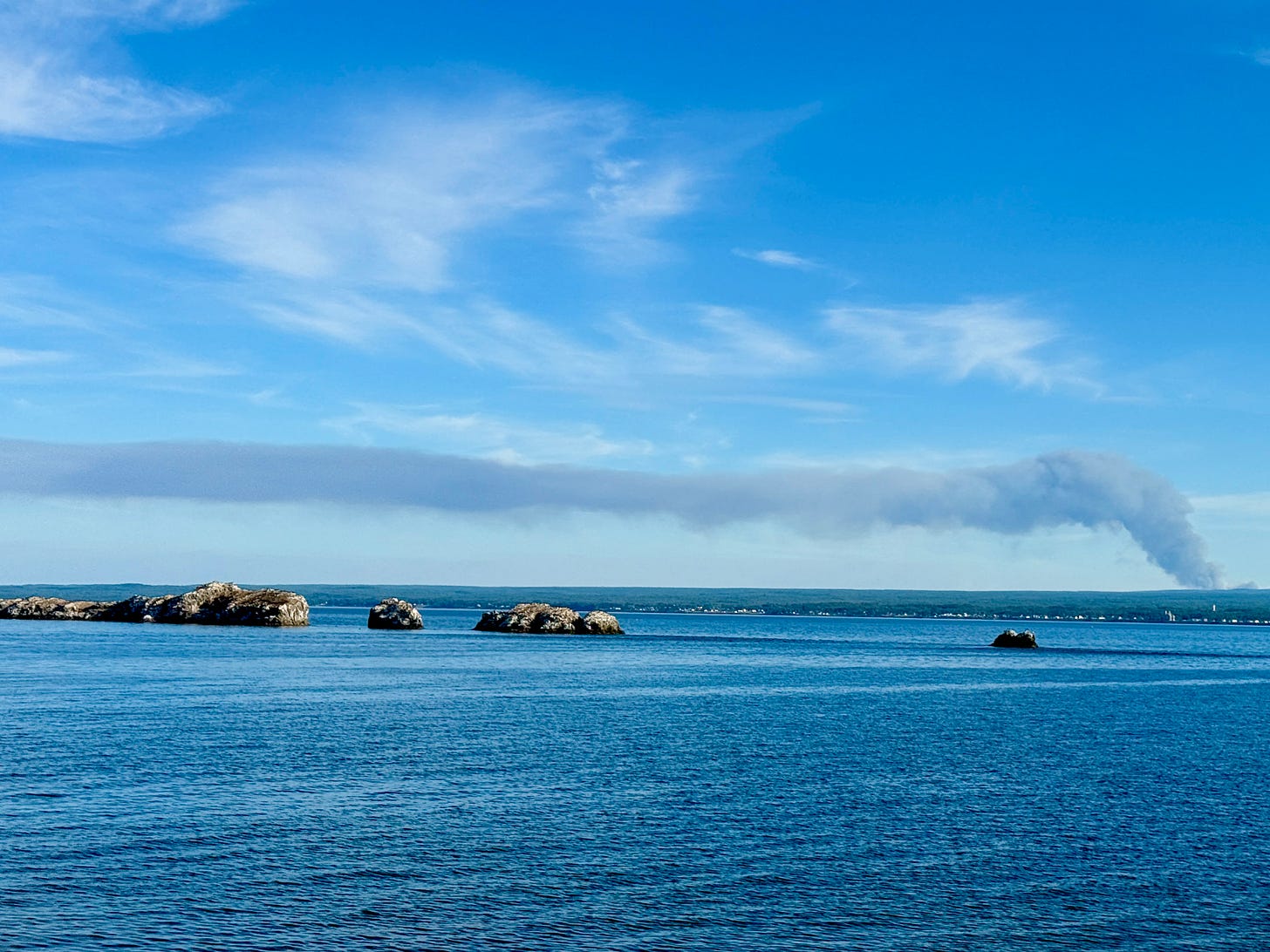
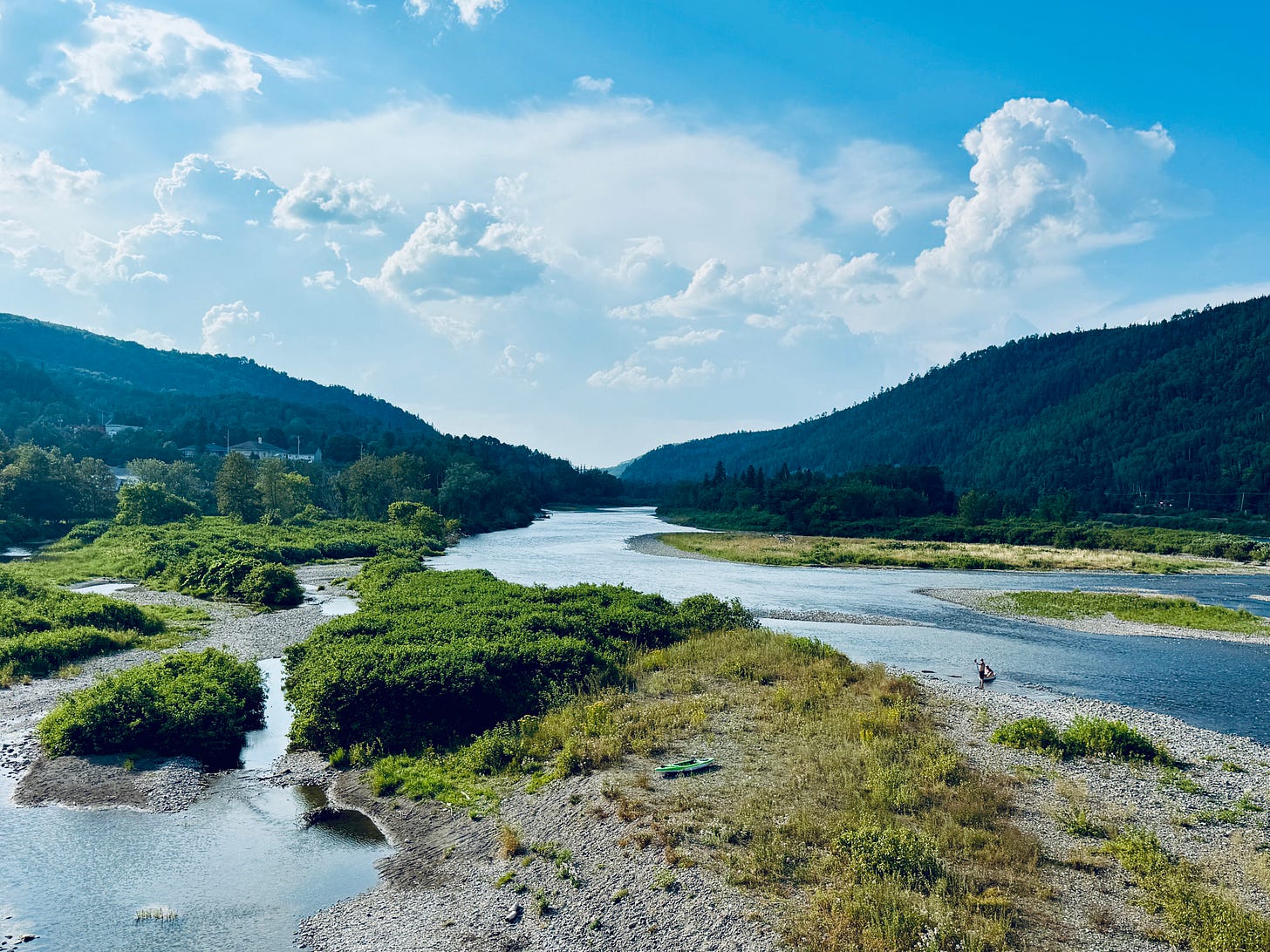
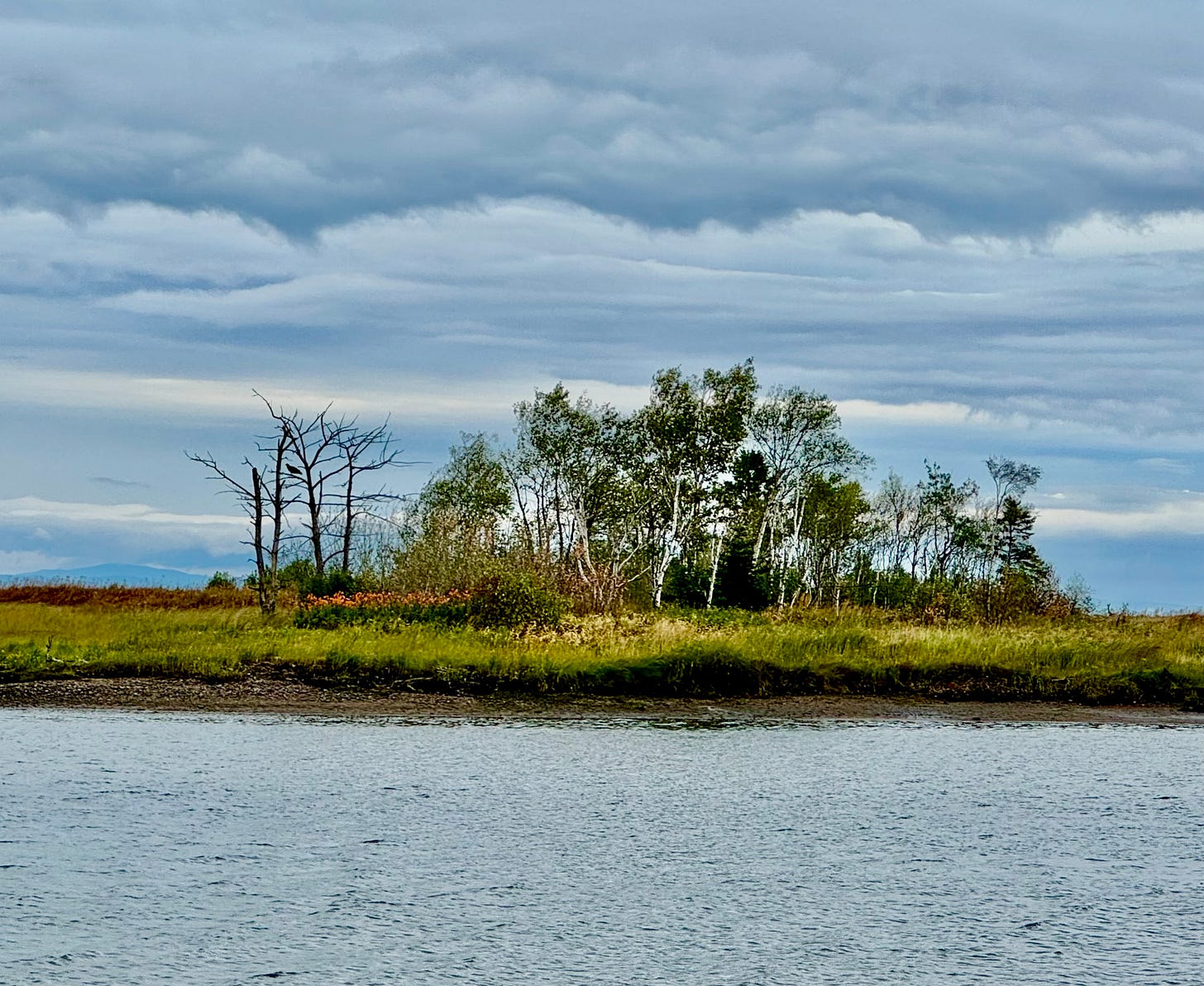

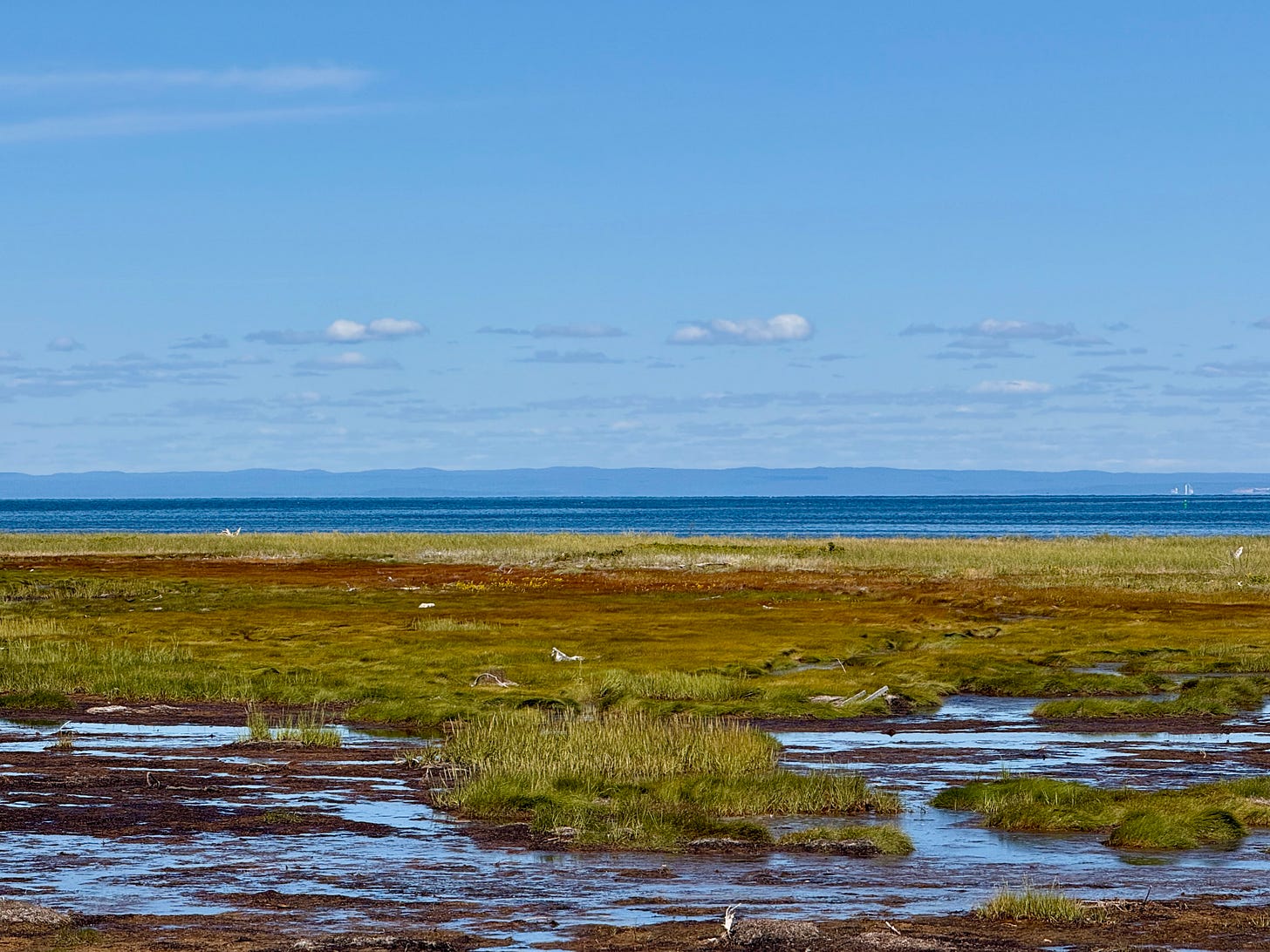
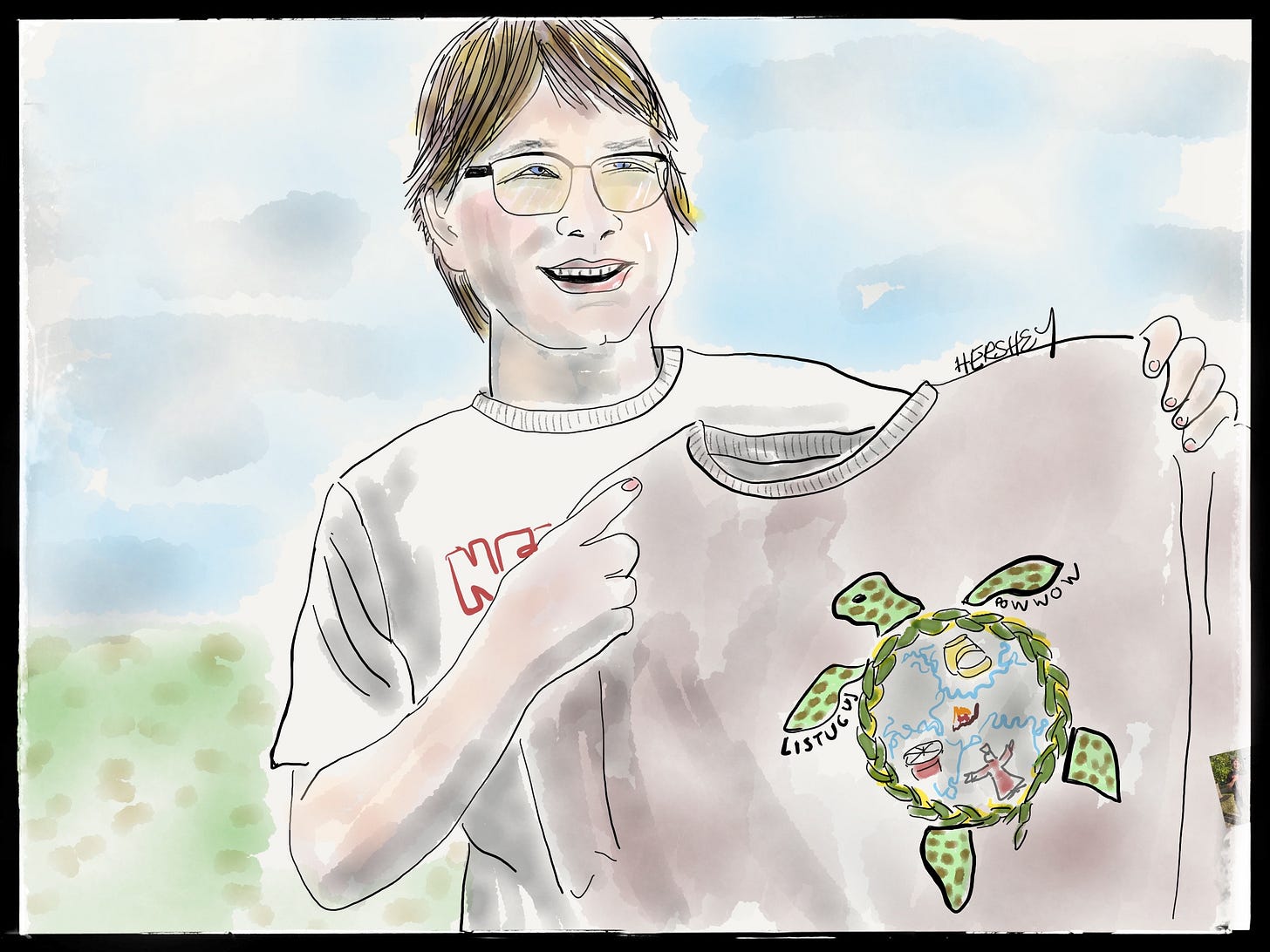
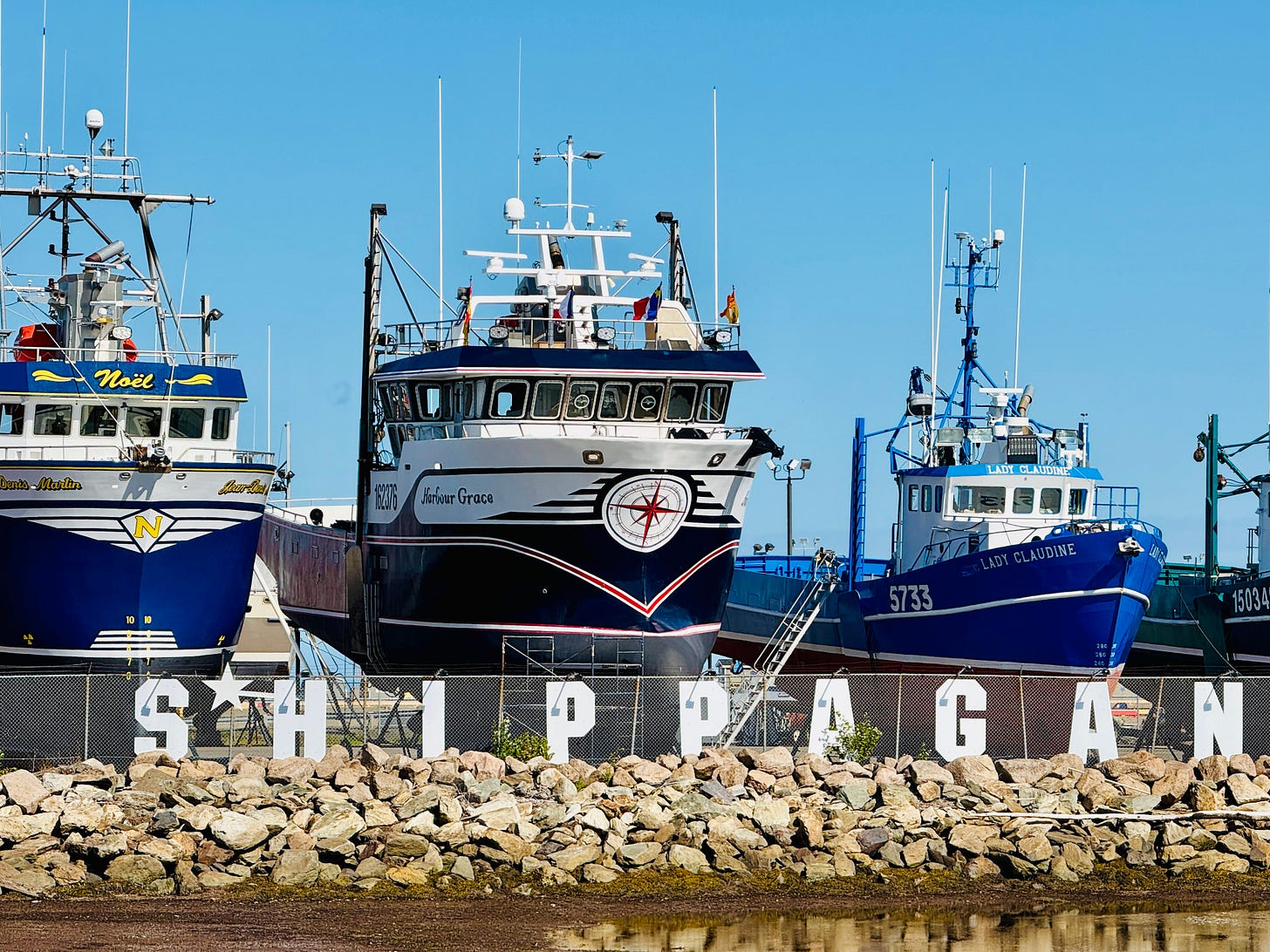
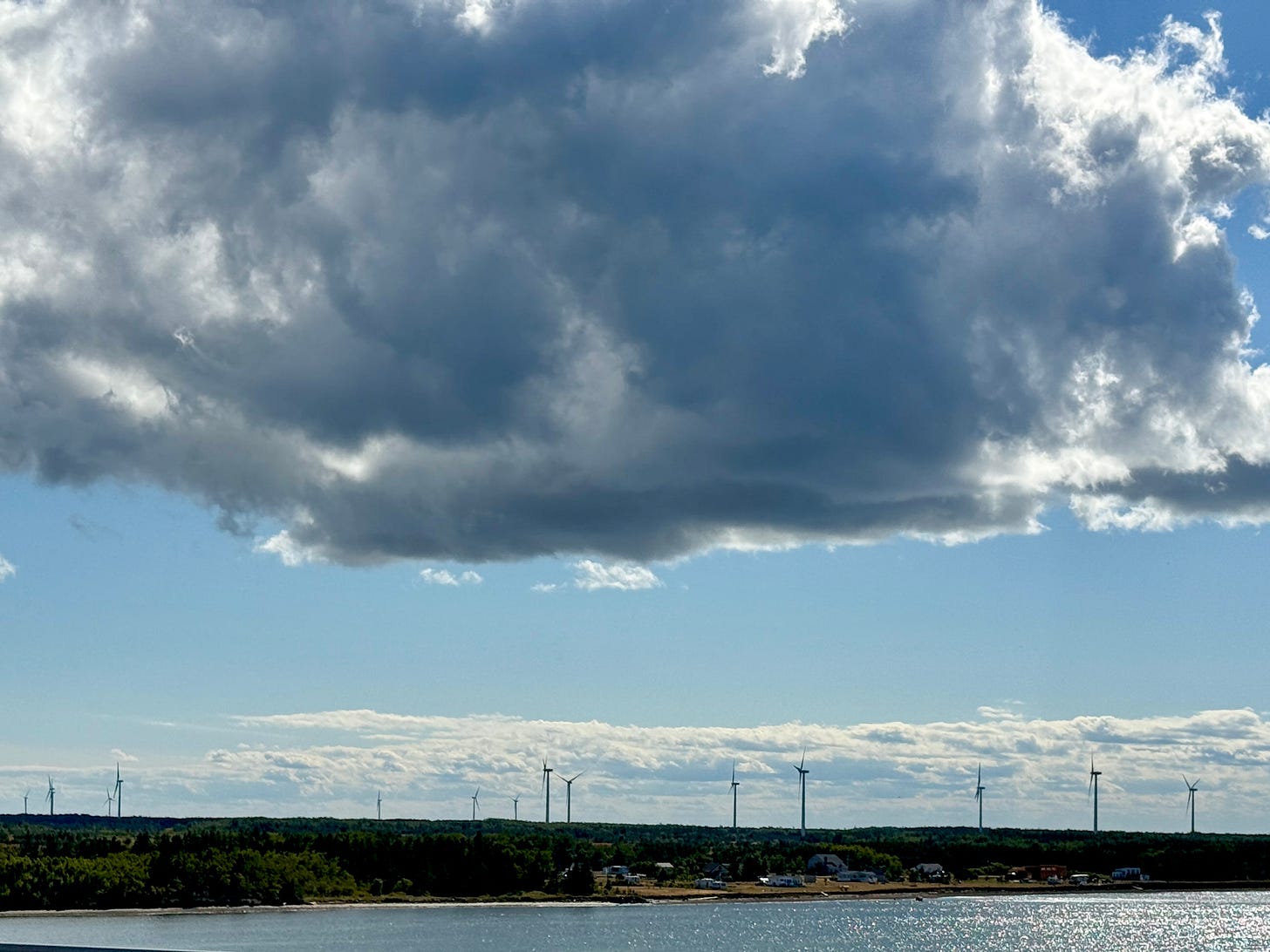

This is so interesting and to read about my home province seen in the eyes of a tourist is eye opening! I am proud to have infraNATURE instead of infrastructure. I do believe NB is on the right path by following examples from our Indigenous friends and to live a simpler life like our Acadian and Migmac ancestors. Thanks for stopping by Charlo (my favourite place in the world ! ) Véro